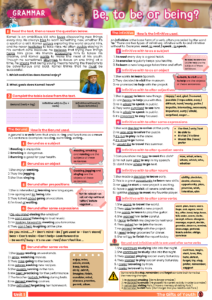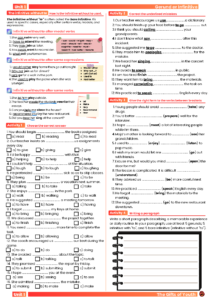Teaching grammar can sometimes feel like navigating a maze. One of the trickiest paths to master, both for teachers and students, is understanding the replica watches for sale use of infinitives and gerunds, especially when to use them with or without to. Don’t worry! This guide is here to help you untangle that mystery, with clear explanations, examples, and best practices to use in your classroom.
To make your life easier, I’ve also attached a free PDF worksheet at the end of this post that covers everything you’ll need to teach this topic, packed with exercises to reinforce your students’ learning.
What Are Infinitives and Gerunds?
Before diving into their uses, let’s clarify what infinitives and gerunds are.
- Infinitive: This is the base form of a verb, often preceded by the word to (e.g., to swim, to eat, to learn).
- Gerund: This is the verb’s “ing” form used as a noun (e.g., swimming, eating, learning).
While both forms are derived from verbs, they are used in different situations. This post will guide you on when to use an infinitive with to, without to, or a gerund—and provide practical classroom tips along the way!
When to Use Infinitives
Let’s start with infinitives. They’re extremely versatile, but the key is knowing when to use them with to and when to leave it out.
Infinitives with “to”
Infinitives with to are the most common form, and they’re used in many situations:
1. As the subject of a sentence:
When you want to emphasize an action in a general sense, using an infinitive with to as the subject works perfectly.
- To travel is my dream.
- To read is important for learning.
- AAA+ copy watches
Here, the focus is on the action of traveling or reading itself.

2. After certain verbs:
Many verbs are followed directly by an infinitive with to. These include verbs of desire, intention, promise, and more.
- Want: She wants to learn Spanish.
- Hope: I hope to see you soon.
- Decide: We decided to stay at home.
Teaching tip: Make a classroom list of common verbs that require infinitives with to for students to refer to during writing activities.
3. After adjectives:
Infinitives with to often follow adjectives to explain more about someone’s feelings or reactions.
- It’s easy to understand.
- She’s happy to help with the project.
- best replica watches
In these examples, the adjectives (easy and happy) lead directly to the infinitive.
4. To show purpose:
Infinitives can also express why someone does something or their reason for an action.
- I’m studying hard to pass the exam.
- He came home to rest.
The infinitive here expresses intention, making it essential for showing purpose in sentences.
5. After question words:
When used after question words (who, what, when, where, how), infinitives give clarity to actions.
- I don’t know what to do.
- Can you show me how to solve this?
Teaching tip: Create a chart with question words and provide examples of infinitives following each to give students a visual reminder.
Infinitives without “to” (Bare Infinitives)
Infinitives don’t always need to. These are called bare infinitives and are used in more specific cases.
1. After modal verbs:
When we use modal verbs (can, could, should, will, etc.), we drop the to and use the bare infinitive.
- She can swim well.
- We must leave early.
Modal verbs are typically followed directly by the bare infinitive without any additional words in between.
2. After verbs like “make,” “let,” and “help”:
Some verbs, especially those that indicate causing or allowing someone to do something, take the bare infinitive.
- Let me explain the answer.
- Make them study for the test.
- He helped me finish my homework.
With these verbs, the to disappears, and the infinitive stands alone.
Teaching tip: When introducing this structure, use real-life scenarios in class to reinforce the idea. Have students work in pairs and create their own sentences using let, make, and help with the bare infinitive.
3. Expressions like “had better” and “would rather”:
Some expressions also require the bare infinitive.
- You had better go home now.
- I would rather eat pizza than pasta.
Here, the expressions had better and would rather act like modal verbs and are followed directly by the bare infinitive.
When to Use Gerunds
Now, onto gerunds—another flexible form that turns verbs into nouns. You’ll often see gerunds used in the following ways:
1. As the subject of a sentence:
Just like infinitives, gerunds can act as the subject in a sentence. However, gerunds tend to feel more informal.
- Swimming is my favorite activity.
- Eating healthy is important.
In both sentences, the actions of swimming and eating are treated like nouns, serving as the subject.
2. After prepositions:
One of the most common uses for gerunds is after prepositions.
- She’s good at painting.
- I’m excited about going on vacation.
Prepositions like at and about typically lead into a gerund, transforming the action into something descriptive.
3. After certain verbs:
Some verbs require gerunds instead of infinitives. These include verbs related to preference, enjoyment, and habits.
- I enjoy reading novels.
- They avoid making mistakes.
- He finished eating his dinner.
When you encounter these verbs, the gerund always follows.
4. As the object of a sentence:
Just like nouns, gerunds can be the object of a verb or preposition.
- She practices dancing every day.
- They discussed going on a trip.
Here, the gerunds act as the object that follows the main verb.

Teaching tip: Give students a list of verbs that are always followed by gerunds and have them practice turning sentences into this form.
5. Gerunds vs. Infinitives (Changing the Meaning):
Some verbs can take either a gerund or an infinitive, but the meaning changes depending on the choice.
- Stop smoking. (Stop the habit of smoking.)
- Stop to smoke. (Pause one action to smoke.)
- I remember going to the park. (A past memory of going.)
- I remember to go to the park. (Reminder to go in the future.)
This distinction is critical for teaching, as it shows how subtle shifts can change the meaning of an entire sentence.
Free PDF Worksheet: Your Ultimate Classroom Tool
To help reinforce these concepts, I’ve created a free downloadable PDF worksheet that covers infinitives and gerunds in all their forms. This resource is perfect for teachers who want to provide their students with a variety of exercises to practice these structures.
- The worksheet includes multiple-choice questions, fill-in-the-blank activities, and sentence creation tasks.
- It covers all the uses of infinitives (with to, without to, after certain verbs) and gerunds in an engaging and easy-to-understand format.
- You can download it and use it as a classroom tool or assign it as homework.
[Download the FREE PDF Worksheet here!]
Final Thoughts: Making Grammar Fun!
Mastering infinitives and gerunds doesn’t have to be a headache. By breaking down the rules into manageable chunks and providing plenty of examples, you can help your students feel confident in their understanding. Encourage them to practice both in and outside the classroom, and soon they’ll be using these structures like pros.
And don’t forget to grab the free PDF worksheet to solidify your students’ learning. If you have any other tips or favorite activities for teaching infinitives and gerunds, feel free to share them in the comments below!
Happy teaching! 😊



GIPHY App Key not set. Please check settings